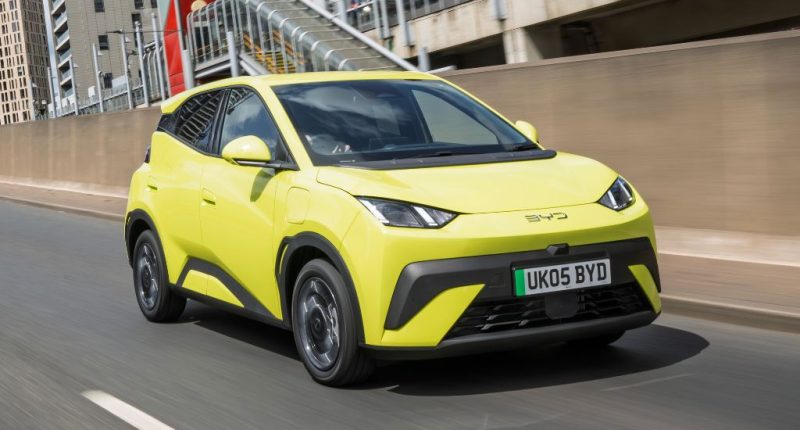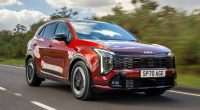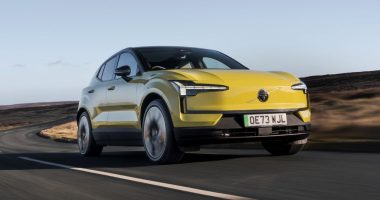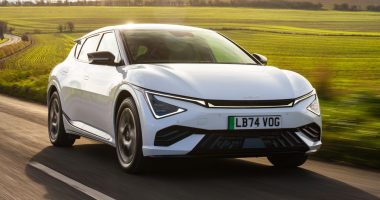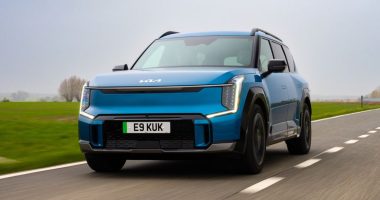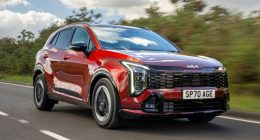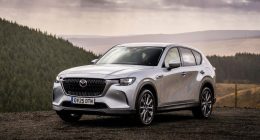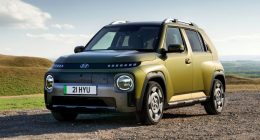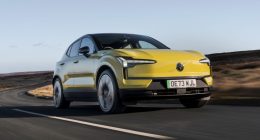As the first step for those wishing to climb the Build Your Dreams (BYD) ladder, the Dolphin Surf is an affordable electric city car that continues the company’s maritime-inspired naming strategy.
It is a new arrival to the UK scene but, in essence, is a rebranded version of the Seagull – a car that has been available in other markets for several or more years now. As with its bigger Seal brother, the Dolphin Surf bundles up BYD’s battery knowhow and motor technology expertise, except it is a much smaller car and one that undercuts most of its European rivals on value. At the lower price point it goes up against Dacia’s Spring, and at the opposite end of the scale Citroen’s e-C3, Renault’s 5, and Hyundai’s Inster.
Built in ‘Active’, ‘Boost’ and ‘Comfort’ specification, the Dolphin Surf has a chiselled nose; if you squint, you can see hints of the Lamborghini Urus. Side-on, there is a mix of straight and angular panel creases, a very marked scallop in the lower door skin, and flush fitting door handles. At the rear meanwhile, there’s a high-set lightbar and roof-mounted spoiler that is intended to not only enhance its sporty look but push up aerodynamic efficiency.
The price of each model also reflects what you get in terms of performance and the all-important real-world range from a full charge. In short, each has a different battery size, power output, and features. ‘Active’ cars run a 30kWh battery and 87bhp motor for 137-miles of range, and ‘Boost’ and ‘Comfort’ a larger 43.2kWh battery pack.
However, the former’s power output stays at a modest 87bhp for a quoted 200-miles but the latter’s increases to 154bhp and offers slightly less range (193-miles) in-between full charges. And on that subject, 65kW is the most the smaller battery can accept and 85kW for the bigger of the two yet – strangely – they all take 30 minutes to charge from 10- 80%. Mild regenerative braking means one-pedal driving is not possible and when it comes to applying the middle pedal, the initial sensation is soft before they bite and take effect.
Perhaps unsurprisingly, performance is not the Dolphin Surf’s strongest hand, the 87bhp motor propelling it from 0-62mph in 11.1 seconds and the pokier alternative bolted to the front axle shaving a couple of seconds off the time – yet it still feels slow, especially when joining fast moving motorway traffic. Not even selecting Sport mode makes a difference, and ‘Eco’ is probably best avoided as it kills throttle response to within an inch of its life.
Given its brief, the Dolphin Surf’s natural home is bumbling around towns and cities, the squashed, narrow body taking the stress out of manoeuvring down a side street or juking into a tight parking space few other would dare try. Should you have the misfortune of hitting a deep or sharp pothole on a broken A-Road, the thud can be felt throughout the cabin, and you do tend to move about quite a bit in your seat on jiggly and twisting roads.
Drive mode choices are made via a row of half-moon buttons on the centre of the dash, and include options for heating and ventilation, radio and media volume, and even the ‘N’, ‘D’, ‘R’ and ‘P’ functions. Like the 10.1-inch touchscreen that can be altered between panoramic and portrait-style at the press of a button (except if you are using either Apple CarPlay or Android Auto, which locks it to landscape mode) these have a cheap but sturdy look about them, as does the diamond patterned finish for the rock-hard dashboard. Still, at this price point, that should not really shock, nor should the shiny, scratchy plastics.
This is countered by equipment levels, with entry-level ‘Active’ models coming with vegan leather-trimmed seats, a 10.1-inch multimedia display, rear view camera and adaptive, lane assist cruise control. To get into a mid-range ‘Boost’ is a few thousand pounds more and it attracts 16-inch alloy wheels, electric front seats and electric folding mirrors. As for top-spec versions, a 360-degree parking camera and tinted rear windows feature.
Practicality-wise, there is 308-litres worth of space in a rather odd-shaped and very deep stepped boot that grows to 1,037-litres if the back seats are pushed forward. Underneath the floor you will find a dedicated area to place charge cables, with tie down points useful for securing items in place. Other neat touches include handy straps on the seat backs that make it easier to hoist them back up, and a trio of ISOFIX child seat anchor points.
Contrary to those small dimensions, it is rather roomy second row; two adults can expect to sit comfortably given there is lots of knee room and space under the front driver and passenger seats for feet to rest. As for overall headroom, this is average at best, but the twenty (yes, twenty) handy storage compartments – including the cleverly positioned and nicely angled wireless phone charger afore the central arm rest – is just about class-leading. Sadly, all the cubbies are hard plastic lined, so anything and everything in them rattles.
